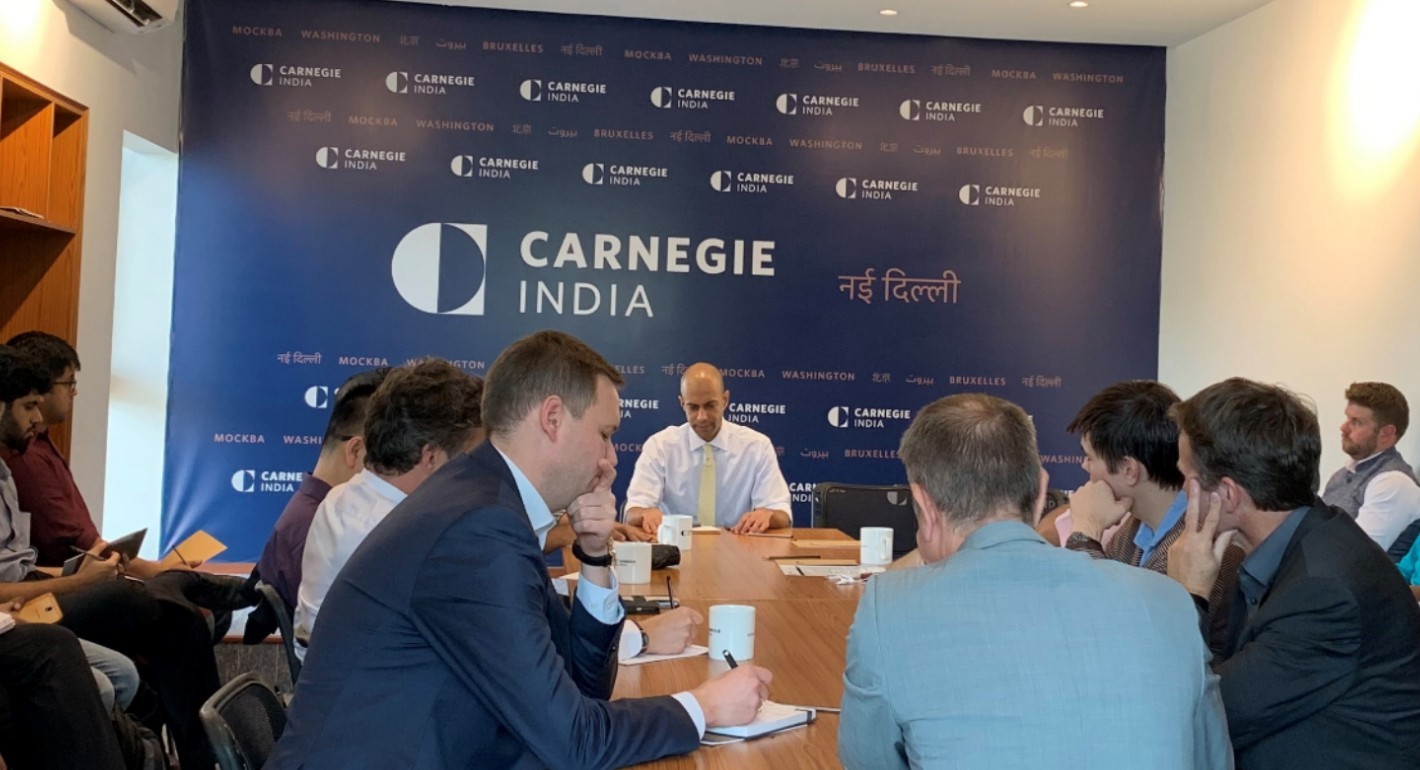Registration
You will receive an email confirming your registration.
Today's emerging nuclear landscape is marked by three features making it distinct from the post–Cold War nuclear era. First, a return to great power nuclear competition, characterized by modernization and expansion programs in each of the major nuclear powers. Second, the diffusion of destabilizing nuclear strategies to medium and small nuclear powers, generating incentives for arms races and crisis instability in regional conflicts. Third, the potential for the emergence of several new nuclear powers, marking a possible end to the largely successful nonproliferation efforts of the first two nuclear eras. Together, this so-called “Third Nuclear Age” may combine the most dangerous features of the first two.
Carnegie India hosted a private roundtable discussion with Vipin Narang, who examined the emerging global nuclear dynamic and its consequences in the years to come. This was moderated by Raghuveer Nidumolu.
DISCUSSION HIGHLIGHTS
- Characteristics of the Third Nuclear Age: Participants laid out the features of the first and the second nuclear ages. The first nuclear age was characterized by nuclear competition between the United States and the former Soviet Union as both sides engaged in arms races and destabilizing nuclear postures, they noted. The second nuclear age—which began after the Cold War—was defined by a growth in regional nuclear powers and global efforts to stop these regional powers from acquiring nuclear arsenals. Speaking about the third nuclear age, participants agreed that the last two years have been characterized by the most dangeroud aspects of the first and second nuclear ages: a renewal of great power competition, re-emergence of smaller nuclear powers like North Korea and Iran, and the diffusion of destabilizing nuclear technologies among smaller nuclear powers. They explained that these features have serious implications for nuclear security across the world today.
- A Nuclear North Korea: Participants examined the current diplomatic relationship between North Korea and the Unites States. While the latter is insisting on the denuclearization of the Korean peninsula, participants agreed that this is highly unlikely, since nuclear weapons are an important bargaining chip for North Korean President Kim Jong-un. They added that the United States will eventually have to come to terms with a nuclear North Korea.
- U.S. Withdrawal from the JCPOA: Participants discussed the Joint Comprehensive Plan of Action (JCPOA), which was considered to be one of former U.S. President Obama’s major foreign policy successes. They stated, President Trump’s withdrawal from the JCPOA has renewed the possibility of Iran resuming its nuclear program. Iran, as a witness to the U.S.-North Korea dynamic, has no incentive to curb its nuclear program, thereby leading to potentially destabilizing consequences for security in the Middle East, highlighted some participants.
- India’s Counterforce Nuclear Posture: Participants deliberated whether India may be moving towards a counterforce nuclear posture—aimed at targeting the adversary’s nuclear capabilities—from an observable countervalue posture, which entails targeting the adversary’s industrial and population centers. Participants debated the implication of Indian Defense Minister Rajnath Singh’s recent statement, suggesting that India may reconsider its ‘no first use’ (NFU) policy. Some participants noted that this may point toward India adopting a counterforce doctrine. Other participants further emphasized that there is room for limited conventional operations between India and Pakistan under the current nuclear umbrella. Following the growing military tensions between India and Pakistan, participants also highlighted that terrorist attacks—like the Pulwama bombing—could quickly escalate into a nuclear crisis between the South Asian neighbors.
This event summary was prepared by Prateek Jha, a research intern, with inputs from Raghuveer Nidumolu, the Knowledge Transfer program coordinator at Carnegie India.
Agenda
4:00 to 4:15 p.m.
Welcome Tea and Coffee
4:15 to 4:45 p.m.
Remarks by Vipin Narang
4:45 to 5:30 p.m.
Discussion with participants
Speaker
Vipin Narang is an associate professor of political science at MIT and a member of MIT’s Security Studies Program. He is also a nonresident scholar in the Nuclear Policy Program at the Carnegie Endowment for International Peace. His research interests include nuclear proliferation and strategy, South Asian security, and general security studies. His first book, Nuclear Strategy in the Modern Era (Princeton University Press, 2014), won the 2015 ISA International Security Studies Section Best Book Award. He is currently working on his second book, Strategies of Nuclear Proliferation (Princeton University Press, under contract), which explores how states pursue nuclear weapons.
Moderator
Raghuveer Nidumolu is the Knowledge Transfer program coordinator at Carnegie India.
